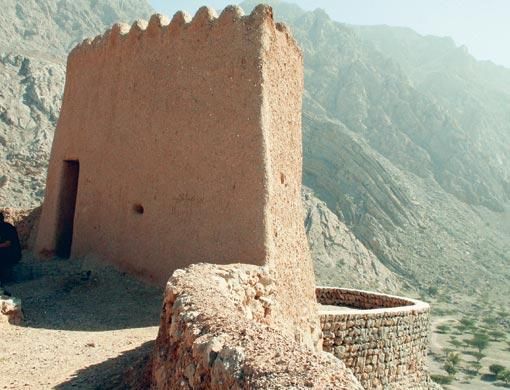Abu Dhabi: Most of the outside world attributes the success of the UAE to the murky fluid beneath its soil, but thousands of years ago, long before oil was of any use, a culture existed here that built a foundation for the UAE's civilisation.
If you scratch beneath the surface of this modern UAE culture there is more to be found than oil. This belief is the subject of a new documentary film that is promising to present new evidence of communities that lived here 150,000 years ago.
With the backing of prominent archaeologists, anthropologists and government departments, the film presents for the first time a glance into some of the most remote sites where life existed thousands of years back.
The man behind this film is Wissam Zebiam, the 34-year-old director and executive producer of the film. Speaking at the opening of the film "Promising Homeland... Historical Nation," Zebiam gets passionate about the history of the UAE.
The film starts with random people giving numbers. Until shortly after it's clear that the question is, "How old is the UAE?" Throughout the film archaeologists from the UAE and abroad unveil proof of communities that lived in these lands more than 150,000 years ago. Mud homes, stone tools, cemeteries and city walls are cinematically presented from remote locations.
The film scratches the surface of this nation's history and it's not done with home-videos and cheap production. "We are using theatre quality cameras... My hope is that this film will dispel the belief that life here started 50 or 60 years ago," Wissam Zebiam, the director and executive producer of the film told Gulf News.
Given a blank cheque by Anasy Media Productions, Zebiam travelled thousands of miles throughout the UAE along with a crew of 62 people in some of the most remote areas to bring to surface this forgotten culture.
"When you realise how many generations lived before us here, it's a fascinating reality that sheds light on this culture. People just think this place came from nothing. Nothing comes from nothing. These civilisations that existed thousands of years ago made way for what life is today," Zebiam the director and executive producer of the film told Gulf News.
Archaeologists believe that communities that lived here can be traced back to more than 150,000 years, which rejects the notion that Bedouins herded these lands just less than a century away.
One of the prominent archaeologists in the UAE is Dr Waleed Yaseem, manager of archaeology at the Abu Dhabi Authority for Culture and Heritage. Dr Yaseem's research has helped to uncover evidence of a culture that existed here in the Bronze era.
"Our discoveries here show that there were communities who lived here in the Bronze era, which was around the 3rd millennium [3,000 BC]," he said.
important facts
1. Vertebrate fossils: The land of the Western Region in Abu Dhabi was completely different some six to eight million years ago. Extinct mammals evident by their fossilized bones were discovered in many places. Remains of giant elephants with tusks curving downwards and their footprints were discovered and identified by scientists. Hippos and other animals lived in fresh water of a river that was flowing in the region during the Late Miocene epic.
2. The Palaeolithic Emirates: During the last two years archaeologists have discovered solid evidence of very ancient communities that were living in different places in the UAE. The most ancient community known so far is the one that lived around Jebel Baraka in the Western Region of Abu Dhabi, at least 150,000 years ago. The Arabian Gulf by then was still a dry land ripped by the Tigris and the Euphrates which debouched at the strait of Hormuz.
3. Pearls and other jewellery: Pearl diving must have been practiced along the shores of the Arabian Gulf since the fifth millennium BC. A number of pearls have been found adorning the females who were buried in the Al Buhais cemetery in the interior of Sharjah six to seven thousand years ago.
4. The ancient capital of Abu Dhabi: Archaeologically speaking, the island of Umm Al Nar is considered the most important coastal site in Abu Dhabi. Although the inhabitants of the island were mainly engaged in fishing they traded with the outside world. It was a harbour for exporting items [mainly copper] to ancient Mesopotamia more than 4,000 years ago. The sea level was higher than today and many of the near-by islands were underwater by then.
5. Hili, Al Ain has the most ancient falaj in the world: This irrigation system, still used today, was introduced by the people of the UAE who lived in the Eastern region of Abu Dhabi during the Iron Age. Site 15 at Hili in Al Ain is the most ancient falaj known in the world. It is a 3,000 year old falaj and is very well-preserved.
- Anasy Media Productions













